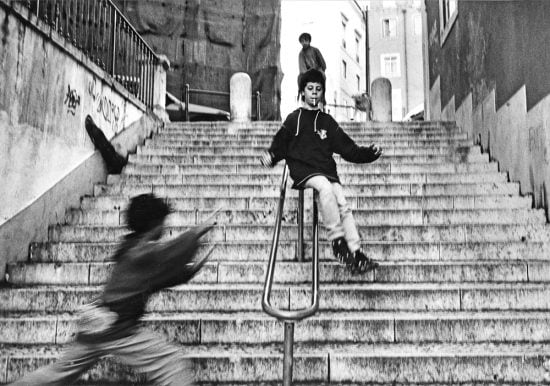The Buzz on Street Photographers
The Buzz on Street Photographers
Blog Article
Street Photographers Things To Know Before You Get This
Table of ContentsStreet Photographers Can Be Fun For AnyoneThings about Street PhotographersGet This Report on Street Photographers10 Easy Facts About Street Photographers ShownThe Facts About Street Photographers Revealed
A style of digital photography that records everyday life in a public area. The very publicness of the setup makes it possible for the photographer to take honest photos of strangers, usually without their understanding. Street photographers do not always have a social purpose in mind, yet they choose to isolate and catch moments which could otherwise go undetected (Street Photographers).He was influenced by several of those who influenced the road digital photographers of the 1950s and '60s, he was not chiefly interested in recording the spirit of the street. The impulse to aesthetically document people in public started with 19th-century painters such as Edgar Degas, douard Manet, and Henri de Toulouse-Lautrec, that worked side by side with digital photographers attempting to catch the significance of urban life.
Due to the fact that of the relatively primitive modern technology readily available to him and the long exposure time needed, he had a hard time to capture the hustle and bustle of the Paris roads. He try out a collection of photo approaches, attempting to find one that would enable him to catch motion without a blur, and he located some success with the calotype, patented in 1841 by William Henry Fox Talbot. While the digital photographers' topic was basically the exact same, the results were significantly different, demonstrating the impact of the photographer's intent on the personality of the photos he created.
Provided the great top quality of his pictures and the breadth of material, architects and artists typically got Atget's prints to make use of as reference for their own work, though commercial interests were hardly his primary motivation. Instead, he was driven to photograph every last remnant of the Paris he loved. The mingled enthusiasm and seriousness of his objective sparkle through, causing photographs that narrate his own experience of the city, qualities that anticipated street digital photography of the 20th century.
Getting The Street Photographers To Work
They disclose the city with his eyes. His job and essential understanding of photography as an art kind acted as inspiration to generations of digital photographers that complied with. The following generation of road digital photographers, though they likely did not describe themselves as such, was ushered in by the photojournalism of Hungarian-born photographer Andr Kertsz.
Unlike his peers, Brassa made use of a larger-format Voigtlnder cam with a longer direct exposure time, forcing him to be extra calculated and thoughtful in his practice than he could have been if using a Leica. (It is assumed that he may not have had the ability to pay for a Leica back then, but he did, nonetheless, use one in the late 1950s to take colour photos.) Brassa's pictures of the Paris underworld lit up by synthetic light were a discovery, and the collection of the series that he published, (1933 ), was a major success.
Cartier-Bresson was a champ of the Leica camera and one of the very first digital photographers to maximize its abilities. The Leica enabled the digital photographer to interact with Web Site the surroundings and to catch minutes as they took place. Its reasonably small size likewise assisted the professional photographer discolor right into the background, which was Cartier-Bresson's preferred method.
9 Easy Facts About Street Photographers Explained
It is since of this essential understanding of the art of photo taking that he is typically credited with rediscovering navigate to this site the tool around once again approximately a century because its innovation. He took photographs for more than a half century and affected generations of digital photographers to trust their eye and intuition in the moment.
These are the questions I will attempt to answer: And afterwards I'll leave you with my very own meaning of street digital photography. Yes, we do. Allow's kick off with specifying what a meaning is: According to (Street Photographers) it is: "The act of defining, or of making something definite, distinctive, or clear"
No, absolutely not. The term is both limiting and deceiving. Seems like a road photography need to be pictures of a streets appropriate?! And all street photographers, except for a handful of outright beginners, will totally value that a street is not the key part to street digital photography, and really if it's a photo of a street with perhaps a couple of uninteresting people not doing anything of interest, that's not road photography that's a picture of a street.
The 15-Second Trick For Street Photographers
He makes a valid point do not you think? While I concur with him I'm not sure "candid public photography" will catch on (although I do kind of like the term "candid digital photography") due to the fact that "road photography" has been around for a long time, with numerous masters' names connected to it, so I think the term is right here to remain (Street Photographers).
You can shoot at the beach, at an event, in a street, in a park, in a piazza, in a cafe, at a museum or art gallery, in a metro terminal, at an occasion, on a bridge, under a bridge ...
Yes, I'm afraid we have no choice! Without guidelines we can not have an interpretation, and without an interpretation we don't have a category, and without a category we do not have anything to specify what we do, and so we are stuck in a "rules interpretation category" loophole!
The 8-Minute Rule for Street Photographers

Report this page